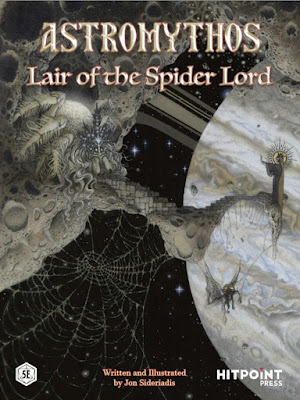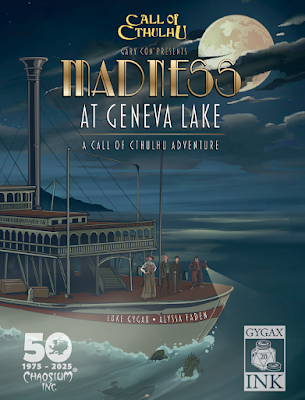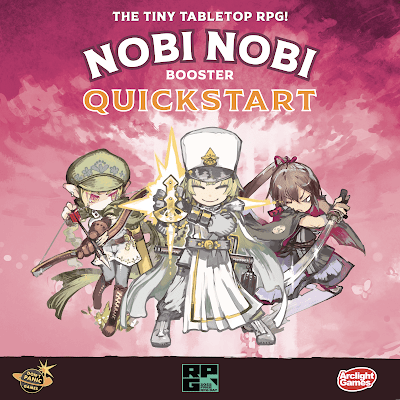A Gourmet Gander
 It was always feared that avian influenza—or bird flu—would
be the one to get us. Despite numerous outbreaks over the past few decades, the
world has been lucky. No worldwide bird flu pandemic. Instead, it was a coronavirus—COVID-19—that
did for us, killing millions between 2019 and 2022, and forcing the world into
a series of lockdowns that brought societies to a halt. In the world of Chew,
it was bird flu that killed one hundred millions, including twenty-three
million in the USA. In response the US government banned chicken and other
poultry and like the War on Terror declared war on terrorism and sponsors of
terrorism, declared war on all fowl. It poured billions of dollars into the
funding of both the U.S. Food and Drug Agency (FDA) and the U.S. Dairy and
Agriculture Administration (USDA), weaponizing both of them, and taking the
FDA’s Special Crimes Division with investigating all food-related crimes,
especially those connected to the farming, smuggling, and selling of chicken.
Narcotics are not so much of a problem in the world of Chew, when there is more
money to be made from dealing in chicken and terrorists with other issues will
farm and smuggle them to fund their activities. Tony Chu, former Philadelphia
police detective, is an agent for the FDA, not just a highly dedicated agent,
but also a ‘cibopath’, which means he psychically reads the history of anything
he bites—where it has been, who touched it, what is in it, and so on. It helps
him with his investigations, but it also means that eating is not something he
and others with his gift can enjoy. Chew is a sixty-issue comic published by
Image Comics between 2009 and 2016 and the winner of numerous comic book awards
during its run.
It was always feared that avian influenza—or bird flu—would
be the one to get us. Despite numerous outbreaks over the past few decades, the
world has been lucky. No worldwide bird flu pandemic. Instead, it was a coronavirus—COVID-19—that
did for us, killing millions between 2019 and 2022, and forcing the world into
a series of lockdowns that brought societies to a halt. In the world of Chew,
it was bird flu that killed one hundred millions, including twenty-three
million in the USA. In response the US government banned chicken and other
poultry and like the War on Terror declared war on terrorism and sponsors of
terrorism, declared war on all fowl. It poured billions of dollars into the
funding of both the U.S. Food and Drug Agency (FDA) and the U.S. Dairy and
Agriculture Administration (USDA), weaponizing both of them, and taking the
FDA’s Special Crimes Division with investigating all food-related crimes,
especially those connected to the farming, smuggling, and selling of chicken.
Narcotics are not so much of a problem in the world of Chew, when there is more
money to be made from dealing in chicken and terrorists with other issues will
farm and smuggle them to fund their activities. Tony Chu, former Philadelphia
police detective, is an agent for the FDA, not just a highly dedicated agent,
but also a ‘cibopath’, which means he psychically reads the history of anything
he bites—where it has been, who touched it, what is in it, and so on. It helps
him with his investigations, but it also means that eating is not something he
and others with his gift can enjoy. Chew is a sixty-issue comic published by
Image Comics between 2009 and 2016 and the winner of numerous comic book awards
during its run.
Chew: The Roleplaying Game, ‘A
Foodie Crime Drama Roleplaying’, is the roleplaying adaptation published by Imagining Games following a successful Kickstarter campaign.
It is a police procedural in which the core concept, best described as ‘Poultry
Prohibition’, so think Elliot Ness, but with chickens, is the least weird thing
about it. There is also cannibal crime, gourmet grievances, DNA dereliction,
cockfighting capers, and a whole lot more. And when that is not enough, there
is office politics, inter-agency rivalries, and the complicated home lives of
the agents to deal with. Chew: The Roleplaying Game is a ‘Forged in the dark’
roleplaying game, meaning that it uses the rules first seen in Blades in the Dark and is a narrative roleplaying game with an emphasis on investigation. Its play
is intended to be built around a ‘Conspiracy Board’, complete with different
coloured sticky notes, connected, of course, by string, which the players and
their characters can follow and amend to track their current case, combined
with the use of Progress Clocks to track time, challenges, danger, and more.
The Player Characters are built around a set of Playbooks. These are ‘The
Expert’, ‘The Hotshot’, ‘The Inspector’, ‘The Lowlife’, ‘The Mascot’, ‘The
Prodigy’, ‘The Veteran’, and ‘The Wronged’. These are all derived from the
comic book series. A Player Character has four attributes. These are Charm,
Guts, Instinct, and Training, and they are rated between one and three. He also
has three ‘Approaches’, traits representing physical or personality traits.
These are all food-related. For example, ‘100% Raw’ means that the Player
Character cannot tell a lie, whilst ‘Sunny Side Up’ means that you are always,
always positive about life. These will affect the ‘Position’ and ‘Effect’ of
any action a Player Character takes. Then there is the Player Character’s
Quirk, his special power, like Tony Chu’s cibopathy. Suggestions include
‘USDAnimal’, a specially-trained cybernetic animal assigned to partner a USA
special agent and serve as a Wi-Fi hotspot, being an actual cyborg, being a
celebrity of some kind, having undergone some special training, and so on. Some
are detailed, but players are allowed to create and name their own, with a
table being provided for this. Perks represent a Player Character’s skills and
are provided by the Playbook, whilst his Appetite Dice, refreshed at the start
of each new case, can be spent to improve the action roll of any Player
Character, to make a Resistance roll, to propose a flashback, or to grab an
unscheduled break. Trouble will bring the Player Character intermittent
difficulties, suggested categories including Debt, Family, Secret, Rivalry,
Romance, and Vice. Over the long term, a Player Character can overcome his
Trouble and ‘Stick a Fork in it’, but will then acquire a new Trouble. A
Trouble has three dice of its own, which can be spent to reroll a failed Action
roll, but means he automatically acquires a Condition and a worse Position.
Creating a Player Character involves choosing three Approaches, a Playbook, two Perks from the Playbook, detailing the Playbook’s Gear, and picking a Job. Three Attribute points are assigned in addition to the one provided by the Playbook. A Quirk is selected and lastly, a look is defined for the Player Character. Tables of Approaches and Quirks are provided that the player can choose from or roll on.
Our sample Player Character is Zillah Murgia, a scientist renowned for her study of the industrial properties of the hyperbolic paraboloid in age of food terrorism. Her brilliance is offset by an unpleasant manner instilled in her by an equally bitter, if not more so, mother, who to this day, claims that her daughter will amount to nothing, and a know-it-all attitude. At the age of fifty-four, Zillah still lives at home with her mother after a failed marriage, and to keep her mother happy, still wears what her mother suggests and gets her hair cut the same way. This does nor make her mother happy. After graduating from Harvard, Zillah attended graduate school. Unfortunately, her arrogance and unpleasantness antagonised the faculty and they attempted to persuade her to leave, which only made her more bitter and feeling further betrayed. Zillah typically found that a bowl of soup seemed to change the mind of whatever member of the faculty was sent to inform her and if that did not quite work, the hint afterwards that Zillah would go to H.R. seemed to solve the problem for her. After getting her PH.D., Zillah was asked to leave Harvard, but was quietly given a letter of recommendation, a pattern that has seen her bounce from one Ivy League college after another. Currently, she is permanent sabbatical from Dartmouth College where she has tenure and is working for the FDA to do something other spend more time with her mother.
Zillah Murgia
PLAYBOOK: The Expert
JOB: FDA Egghead
ATTRIBUTES
Charm 0 Guts 1 Instinct 1 Training 2
APPROACHES
Lemonhead – Cynical and leaves a sour taste in people’s mouths
Egg Head – Tried and True Nerd
Bitter – Holds a grudge
PERKS
Knowledge Bomb
Think Tank
QUIRKS
Donepulmentar – Onlookers lust after you when you slurp soup
GEAR
Tools of the Trade, A Goddamn PH.D., Portable Lab, Sat-Link, Tenure
LOOK
How your mother would dress as a Federal Agent
Mechanically, to have his character undertake an action or attempt to gather information, a player rolls a number of dice equal to the appropriate attribute, plus any bonus dice from special action or perks. The Gourmet Master sets the Position and Effect—abbreviated to ‘PEE’—for the Action Roll. The Position represents the Threat Level, ranging from zero and ‘No Risk’ to three and ‘Nuts’, and determines how many consequences a Player Character will suffer if the roll is failed. Whereas, the Effect level is the reward, ranging from zero or ‘None’ to three and ‘Great’. The Effect can be narrative or it can advance a Progress Clock. Only the highest result is counted. A roll of six is a success, a roll of four or five is a mixed result or a result with Consequences, and a roll of one, two, or three is a bad outcome. A critical roll is made if more than a single six is rolled, whilst a fumble occurs on a roll of one when the Position is ‘Nuts’. Consequences can result in complications, a worse position, lost opportunity, and/or Conditions. There are four Conditions and they apply directly to a Player Character’s Attributes. These will make a Player Character’s Position for an Action Roll worse and if a Player Characters all four, he suffers a Knock Out. Consequences can be withstood by making a Resistance Roll, which requires the expenditure of Appetite Dice, and if they are all used up, a Player Character will also suffer a Knock Out and Burnout, meaning he will also permanently lose one of his Appetite Die.
All of this is player-facing, that is, the players make the rolls rather the Gourmet Master. This applies to combat too, the NPCs acting as consequence of the rolls and decisions made by the players, and then the players making Action or Resistance in response. The players are encouraged to add to the narrative as much as the Gourmet Master—and use as much food-based terminology as they can when doing so, and whilst the rules look more complex than they actually are, they are quite straightforward. It also helps that the book includes plenty of examples, including a thirty-four page example of play.
Play and investigation of a Case is structured into three
phases. These consist of ‘Off Duty’, where the Player Characters’ can be
explored away from an active case or their jobs; ‘Investigation’ beginning with
a briefing and then continuing with the search for the case’s three key details
in an attempt to crack the case; and the ‘Action Phase’ where the perpetrators
are caught or identified. The three phases are followed by a ‘Debriefing’,
which can be both in game and out.
For the Gourmet Master there is a breakdown of a Case File and how to create
one, backed up with a table of crime names and tables to generate random
crimes, as well as advice on handling and resolving the investigation, handling
conspiracies, unscheduled breaks, and more. All covering the game play’s core
phases. The background covers both the FDA and USDA as employers of the Player
Characters, and advice on how to portray their boss. Numerous factions are
detailed and categorised according to the threat they pose to the Player
Characters, from Tier I and limited influence to Tier V and possessing global
influence. For example, a Tier I threat might be the Crime Alley Ramblers and
the Philly Goths, whilst an Amazon Necromantic Death Cult and the Chicken
Colonels are Tier II. All of these factions are nicely detailed, with their
typical looks, possible Clocks, assets, notable NPCs, allies and enemies, and
so on. Some eighty or so factions are detailed in this fashion. Various places
of interest, again drawn from the comic book, are also detailed, including
their first appearance, locations, notable details and reasons to go there,
possible NPCs and scenes, and these together with the earlier descriptions of
the main characters from the comic book and the multiple factions, the Chew:
The Roleplaying Game serves as a decent sourcebook for the comic book.
Rounding out the Chew: The Roleplaying Game are two
scenarios. This is in addition to a couple of case file descriptions slotted
earlier into the book which could be adapted for play by the Gourmet Master.
The first scenario is ‘Over an Open Flame’ by Banana Chan’ in which the Player Characters
have to solve the kidnapping of reality television chefs to make them cook over
an open volcano whilst in Bridgett Jefferies’ ‘Thigh Man, Thigh Man’, the
Player Characters have to identify and track down the mysterious prankster who
has been breaking into the homes of FDA agents and broadcasting from there.
This offers the opportunity for the Gourmet Master to play lots of tricks and
pranks on the Player Characters, increasingly frustrating them. The Player
Characters are ‘Rogue Agents’, recognising something of the prankster’s
escapades and in investigating and potentially capturing him, perhaps proving
themselves to be FDA agents once again. Both scenarios are entertaining, both
are spiced with food puns aplenty, and both coming with plenty of cooking tips,
as the advice for Gourmet Master is called.
Physically, Chew: The Roleplaying Game is a frenzy of vibrant colour and
action, liberally illustrated with artwork from the comic book, alongside what
is actually quite a lot of text. In places it does feel dense and lean towards
being overwritten, the numerous examples and the extended example of play very
much serve to counter this. What this means is that Chew: The Roleplaying Game
is actually a lot simpler than it first looks.
Chicken is kind of an everyman kind of food, a meat whose flavour and texture lends itself to a multitude of ingredients, herbs, and recipes, giving a great flexibility, whereas Chew: The Roleplaying Game is very much not that. It is specifically designed to handle the weird zaniness and wacky action depicted in the comic, a world of taco terrorism, food fears given form, alien invasive plants, cannibal crime, but definitely, definitely not vampires. Which means unlike the ubiquity of chicken, it is not a roleplaying game that is going to appeal to everyone and it definitely pays to have read the comics. Of course, fans of the comic will definitely want to get their teeth into Chew: The Roleplaying Game, and they will find generous servings of everything they enjoyed about Chew.



















